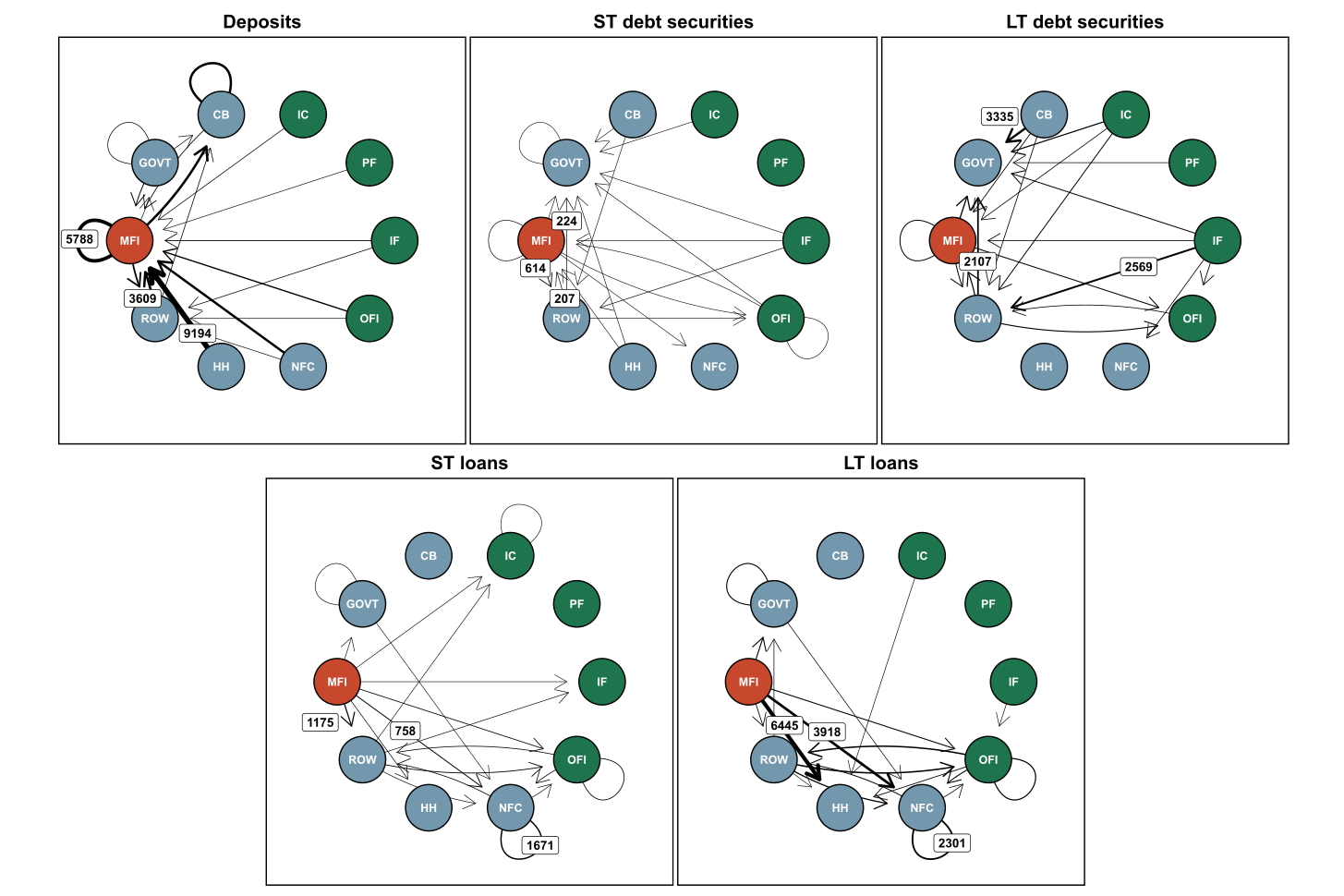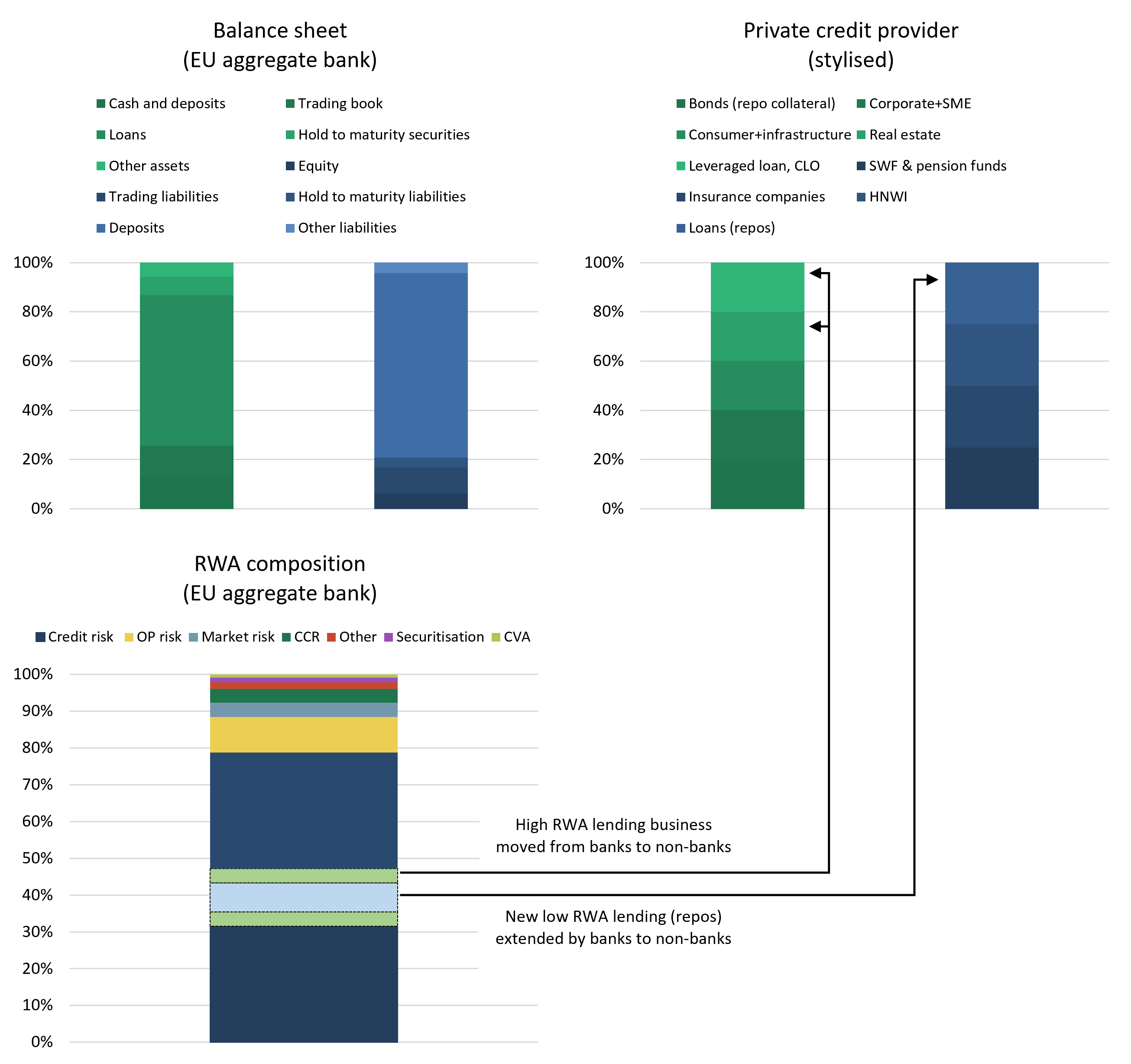List of figures
Table of contents / search
Table of contents
List of figures
Macroeconomic environment and market sentiment
Asset side
Liabilities: funding and liquidity
Capital and risk-weighted assets
Profitability
Operational risks and resilience
Special topic – CRE-related risks
Special topic –EU/EEA banks’ interconnections with NBFIs and private credit
Policy implications and measures
Annex I: Samples of banks
Search
List of Figures
Source: IMF, May 2024
Source: IMF, May 2024
Source: Commission Forecasts, May 2024
Source: Bloomberg
Source: Bloomberg
Source: ECB
Source: EBA supervisory reporting data
Source: EBA supervisory reporting data
Source: EBA supervisory reporting data
Source: EBA Risk Assessment Questionnaire
Source: EBA supervisory reporting data (funding plan data)
Source: EBA supervisory reporting data (funding plan data)
Source: EBA supervisory reporting data (funding plan data)
Source: EBA supervisory reporting data (funding plan data)
Source: EBA supervisory reporting data
Source: EBA supervisory reporting data
Source: EBA supervisory reporting data
Source: EBA supervisory reporting data
Source: EBA supervisory reporting data
Source: EBA Risk Assessment Questionnaire
Source: Dealogic, EBA calculations
Source: IHS Markit*
Source: Reporting on MREL and TLAC
Source: EBA supervisory reporting data
Source: EBA supervisory reporting data
Source: EBA supervisory reporting data
Source: EBA supervisory reporting data
Source: EBA supervisory reporting data
Source: EBA supervisory reporting data
Source: EBA supervisory reporting data
Source: EBA supervisory reporting data
Source: EBA supervisory reporting data (funding plan data)
Source: EBA supervisory reporting data (funding plan data)
Source: EBA supervisory reporting data (funding plan data)
Source: EBA supervisory reporting data (funding plan data)
Source: EBA supervisory reporting data (funding plan data)
Source: EBA supervisory reporting data (funding plan data)
Source: EBA supervisory reporting data (funding plan data)
Source: Dealogic
Source: EBA supervisory reporting data
Source: EBA supervisory reporting data
Source: EBA supervisory reporting data
Source: EBA supervisory reporting data
Source: EBA supervisory reporting data
Source: EBA supervisory reporting data
Source: EBA supervisory reporting data
Source: EBA supervisory reporting data
Source: EBA supervisory reporting data
Source: EBA supervisory reporting data
Source: EBA supervisory reporting data
Source: EBA supervisory reporting data
Source: EBA supervisory reporting data
Source: EBA supervisory reporting data
Source: EBA Risk Assessment Questionnaire
Source: EBA Risk Assessment Questionnaire
Source: EBA supervisory reporting data (funding plan data)
Source: EBA supervisory reporting data (funding plan data)
Source: EBA supervisory reporting data (funding plan data)
Source: EBA supervisory reporting data (funding plan data)
Source: EBA supervisory reporting data (funding plan data)
Source: EBA Risk Assessment Questionnaire
Source: EBA Risk Assessment Questionnaire
Source: EuReCA (EBA’s AML/CFT database)
Source: EuReCA (EBA’s AML/CFT database)
Source: EuReCA (EBA’s AML/CFT database)
Source: EuReCA (EBA’s AML/CFT database)
Source: Green Street
Source: Green Street
Source: BIS Data Portal, ECB Statistical Datawarehouse (SDW), EBA calculations
Source: BIS Data Portal, ECB Statistical Datawarehouse (SDW), EBA calculations
Source: S&P Capital IQ
Source: EBA supervisory reporting data
Source: EBA supervisory reporting data
Source: EBA supervisory reporting data
Source: EBA supervisory reporting data
Source: EBA Risk Assessment Questionnaire
Source: EBA supervisory reporting data
Source: EBA supervisory reporting data
Source: EBA supervisory reporting data
Source: EBA supervisory reporting data
Source: EBA Risk Assessment Questionnaire
Source: EBA supervisory reporting data
Figure 65: Network of the EA financial system comprising links between the banking sector and other sectors of the economy, December 2023 (the values of the three largest exposures are shown next to the respective arrow in each of the charts) (EUR bn)

Source: EBA supervisory reporting data
Source: EBA supervisory reporting data
Source: EBA supervisory reporting data
Source: EBA supervisory reporting data
Source: EBA supervisory reporting data
Source: EBA supervisory reporting data
Source: EBA supervisory reporting data
Source: EBA supervisory reporting data
Figure 71: Illustrative examples of a bank’s and a private credit provider’s business and how they are linked

Source: EBA, using, for instance, anecdotal evidence, EBA Transparency Exercise data and further market research/analysis
